
The Lights in the Tunnel
by
Martin Ford
Published 28 May 2011
This has been reflected in the substantial productivity increases of the U.S. economy in recent years. While the impact of globalization on the job market has received most of the attention, I think most economists would be likely to agree that advancing technology and job automation have played a far more significant role. Although factors such as stagnating wages for average workers would seem to provide support for the theory that automation is beginning to have a significant impact on the economy’s ability to create jobs, it is important to note that there are also signals which tend contradict this conclusion: before the advent of the current crisis, unemployment as measured by the government, remained very low.
…
As we saw in Chapter 2, this point marks the downfall of economists’ faith in the Luddite fallacy, and it also marks the beginning of a downward economic spiral for the simple reason that workers are also the consumers of everything produced in our economy. What might we expect to happen if the overall economy were approaching this tipping point, beyond which industries would no longer be labor intensive enough to absorb workers who lost their jobs to automation? We would probably expect to see gradually rising unemployment, stagnating wages and significant increases in productivity (output per hour of labor) as industries were able to produce more goods and services with fewer workers. That sounds uncomfortably close to what actually occurred in the years leading up to the current recession.* In August, 2003, The Economist wrote that “the Bureau of Labour Statistics offered the latest evidence of America’s productivity revival: output per worker soared by 5.7% in the second quarter, at an annualised rate.
…
But in today’s less exuberant times, the figure has raised the unhappy prospect of growth without job creation.”44 Three years later, in an article entitled “The Case of the Missing Jobs,” BusinessWeek said: “Since 2001, with the aid of computers, telecommunications advances, and ever more efficient plant operations, U.S. manufacturing productivity, or the amount of goods or services a worker produces in an hour, has soared a dizzying 24%….In short: We’re making more stuff with fewer people.”45 There is no way to know for sure how close the economy might be to the point where overall job creation will permanently stall. However, these statistics are certainly cause for concern. *[ As I noted earlier, we did not see an increasing unemployment rate in the years leading up to the current crisis. We did, however, see stagnating wages, increasing productivity and some evidence of underemployment. ] The Average Worker and the Average Machine Another way to express this idea of a tipping point is to think of an average worker using an average machine somewhere in the economy. Obviously, in the real world there are millions of workers using millions of different machines.

Chavs: The Demonization of the Working Class
by
Owen Jones
Published 14 Jul 2011
Not only did this make labour plentiful, it also made it cheap because corporations could get away with paying far lower wages in the developing world, not least because of international deregulation pushed by the likes of the World Trade Organization. This has dealt a crippling blow to workers' bargaining power. After all, companies can simply relocate to the third world if their Western workforces refuse to stomach low wages and poor conditions. Stagnating wages and low-paid service sector jobs played their part in the economic crisis. To maintain their spending power, workers began to borrow. In 1980the ratio between debt and income was 45. By 1997 it had doubled, before reaching an astonishing 157.4 on the eve of the credit crunch in 2007. As people's purchasing power slowed, more and more credit was splashed out on consumer goods.
…
Sir Philip gets away with paying no tax in Britain because he has given his Monaco-based wife legal ownership of key companies such as Topshop. Looking beyond the statistics for a moment, clearly we are dealing with two groups of people with irreconcilable differences. On the one hand those who scrimp and save, relying on often poor and stagnating wages to pay the rent or the mortgage. Their long hours and growing productivity have gone unrewarded. They send their kids to local schools and when they get ill,they depend on the local GP and hospital. They pay their taxes. With the death ofindustrial Britain, many of them depend on relatively low-paid, insecure service sector jobs.
…
If there were strong trade unions and perhaps a union or employee representative on the company's board, it would become more embarrassing for CEOs to award themselves huge pay increases and bonuses while holding down wage demands from employees. The decline of the trade unions lies at the heart of many of the problems of the working class: the fact that they don't have a voice; their stagnating wages; their lack of rights in the workplace, and so on. As Tony Blair once boasted, even with New Labour's changes, the law remains 'the most restrictive on trade unions in the Western world'. Indeed, Britain is actually in violation of its obligations as a signatory to various International Labour Organization conventions.
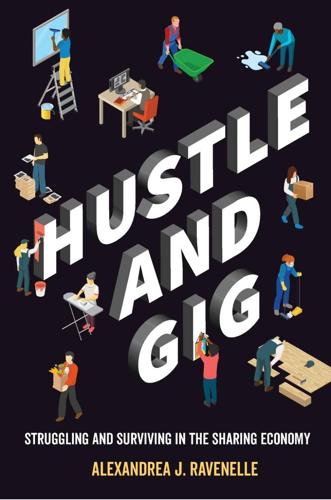
Hustle and Gig: Struggling and Surviving in the Sharing Economy
by
Alexandrea J. Ravenelle
Published 12 Mar 2019
Why have we gone from questioning why anyone should have to work multiple jobs to accepting and embracing this as our new reality? Why do workers feel the need to forgo their leisure time? Why are PhDs running errands for twenty dollars an hour, and why are former finance professionals cleaning houses?22 Why is driving part-time for Uber or renting a spare room on Airbnb seen as a postrecession solution to stagnating wages and the lack of job security? Why are workers who spend their “free” time on a technologically enabled second or third job, on a platform controlled by other people, hailed as entrepreneurs? Americans already work a lot. Although direct comparisons can be difficult to make owing to data gaps and different data collection methods, American work weeks are longer than in most industrialized countries.23 Even though the United States doesn’t require paid time off, and many workers don’t receive paid vacation time, research suggests that Americans neglect to take what time they do receive: on average in 2013, employees with paid time off neglected to use 3.2 days of paid time off.24 The problem seems to be growing.
…
Although researchers have addressed how classification as an independent contractor, as opposed to employee, can affect workers, the concept of risk is more commonly used when discussing entrepreneurs.34 Since the late 1700s, entrepreneurs have been linked with risk-taking based on Ricard Cantillon’s observations that the entrepreneur “buys at certain prices and sells at uncertain prices,” thereby bearing the risk of the transaction.35 Harvard Business School’s Howard Stevenson describes entrepreneurship as “the pursuit of opportunity beyond resources controlled.”36 Although an entrepreneur is often thought of as creating something new, the Oxford dictionary emphasizes control and risk in its definition of an entrepreneur, describing one as someone who “undertakes or controls a business or enterprise and bears the risk of profit or loss.”37 The concept of risk is particularly salient for entrepreneurs, especially in the United States; statistics from the Bureau of Labor Statistics demonstrate that roughly a third of new businesses will fail in the first two years, and that more than half won’t last five years.38 Yet Jacob Hacker has noted that risk in the workplace is no longer assumed entirely by entrepreneurs or capitalists.39 Workers have seen their health insurance coverage transformed into high-deductible plans and their company pensions converted from defined benefit to defined contribution plans (401ks), pushing the financial risk of health problems and bad investments onto the workers. The rise of outsourcing and focus on short-term profits further means that workers are constantly competing for jobs in a “spot market” that resembles a trading floor. Thanks to stagnating wages, many families rely on two incomes, and the loss of either can be devastating. In 1994, sociologists Stanley Aronowitz and William DiFazio published The Jobless Future, arguing that companies were “scratching every itch of everyday life with sci-tech,” leading toward “more low-paid, temporary, benefit-free blue- and white-collar jobs and fewer decent permanent factory and office jobs.”
…
The same report further notes that “68% [of sellers] said that Etsy provides supplemental income for themselves or their family . . . contributing 7.6% to household income[,] . . . enough to cover the cost of annual car payments or several months’ rent.”48 Based on these reports—issued by the companies themselves—it appears that while the gig economy may offer workers a way to fight stagnating wages and workplace instability, at best, this work is subsistence entrepreneurism. Increasing Social Inequalities As the Success Stories show, some workers are able to create a middle-class, or higher, living from the sharing economy. Even individuals who are renting out a spare bedroom on Airbnb, ostensibly to make rent, like Ryan in the first chapter, soon discover that if they have the available capital, they can quickly realize considerable profits on their investment.
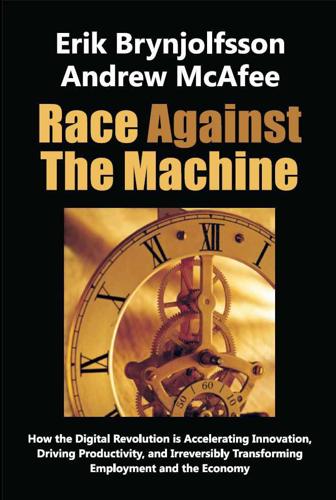
Race Against the Machine: How the Digital Revolution Is Accelerating Innovation, Driving Productivity, and Irreversibly Transforming Employment and the Economy
by
Erik Brynjolfsson
Published 23 Jan 2012
Smart entrepreneurs can, and will, invent ways to create value by employing even less skilled workers. However, the message the labor market is clearly sending is that it’s much easier to create value with highly educated workers. Unfortunately, our educational progress has stalled and, as discussed in Chapter 3, this is reflected in stagnating wages and fewer jobs. The median worker is not keeping up with cutting-edge technologies. Although the United States once led the world in the education of its citizens, it has fallen from first to tenth in the share of citizens who are college graduates. The high costs and low performance of the American educational system are classic symptoms of low productivity in this sector.
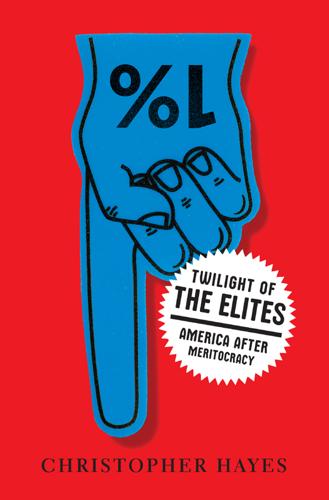
Twilight of the Elites: America After Meritocracy
by
Chris Hayes
Published 11 Jun 2012
This is why, if there is a single consensus in our contentious politics, it is about the importance of education: “Think about every problem, every challenge, we face,” George H. W. Bush said in a 1991 speech. “The solution to each starts with education.” Bill Clinton explicitly argued that education was the solution to stagnating wages and flat-lining incomes: “We are living in a world where what we earn is a function of what we learn.” And Barack Obama has made this particular theme something of an obsession: “In a global economy where the most valuable skill you can sell is your knowledge, a good education is no longer just a pathway to opportunity—it is a prerequisite.”
…
And if the divide between the 1 percent and the 99 percent really is a defining feature of our politics, how can the 99 percent trust that same wealthy, governing elite to zealously pursue its interests? 1 PERCENT PATHOLOGIES Nearly all of the commentary on America’s growing inequality focuses on the ways in which skewed distribution of income and wealth is bad for those on the bottom of the pyramid: the way it leads to stagnating wages and competition for scarce positional goods, how it alienates the middle and working classes and the poor. But we largely ignore the effect of extreme inequality that may, in the long run, prove to be the most destructive: the way it makes those at the top of the social pyramid worse. Desmond Tutu, the heroic archbishop who helped lead the triumphant battle against South African apartheid, made a similar observation about the effects of the apartheid system on the white ruling class.

The Digital Party: Political Organisation and Online Democracy
by
Paolo Gerbaudo
Published 19 Jul 2018
The sympathy of young people, especially those living in urban areas, towards digital parties is unsurprising for a number of reasons. First, young people enjoy higher than average levels of internet access, which means they are more likely to buy into the techno-utopian idea of the digital revolution as a positive change. Second, they have been disproportionately affected by the effects of the economic crisis, stagnating wages, unemployment and labour casualisation. Therefore, they tend to be more receptive to the message of social change offered by digital parties and their promise to redistribute wealth. In terms of levels of income and occupation, it can be said that digital parties are neither working-class nor middle-class parties.
…
They propose that the state model of universal healthcare should expand to other domains of life such as transport or communication services. This measure is aimed at protecting citizens, especially those at the lower end of society, and shielding them from the effects of automation and their impact on employment and stagnating wages, as well as providing all citizens with a job guarantee through extended state employment. What is interesting across these policies, regardless of their specific orientation, is the way they illustrate digital parties’ efforts to devise a new model of social insurance in a society marked by extreme diversification and occupational instability.
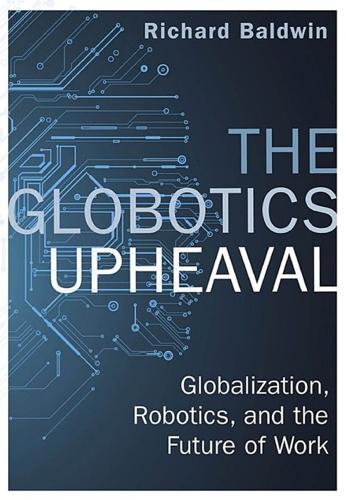
The Globotics Upheaval: Globalisation, Robotics and the Future of Work
by
Richard Baldwin
Published 10 Jan 2019
In 2017, another populist politician said: “The forgotten men and women of our country will be forgotten no longer.” That was President Donald Trump, who was elected in a backlash against an economy that, for decades, provided more wealth for the well-off but more anguish for the average. Since the 1970s, the US working class has seen stagnating wages, rising economic insecurity, and increasing hopelessness. The situations in Europe and Japan are not as dire, but they share the trends. FDR’s reforms fixed American capitalism and set the stage for the thirty glorious years of economic prosperity. So why are we back here again? Why aren’t the disruptive duo of automation and globalization lifting all boats?
…
Voting to leave the EU and electing an unruly outsider as US president were ways of saying “enough is enough.” But in fact, the 2016 backlash has given very little back. The 2016 populists politicians offered illusion-based solutions—like a border wall, or leaving the EU—to reality-based problems—like deindustrialization, or stagnate wages. These voters are still struggling financially. Neither Trump nor Brexit have improved things for them materially. The economic calamity continues—especially in the US. The loss of manufacturing jobs has fundamentally damaged the lifetime prospects of many Americans. There is only the thinnest chance that a fifty-year-old worker displaced from manufacturing will find a job that pays as well or provides as much income security.

The Fissured Workplace
by
David Weil
Published 17 Feb 2014
Even more remarkably, income for the pinnacle of the distribution—the top .01%—almost doubled, from 3.4% in 1993 to 6.2% in 2007.41 That the economy has ceased to broadly share its benefits over the past thirty years is further illustrated by the reversal of the postwar pattern of wage and productivity growth tracking one another. Between 1979 and 2009, productivity rose by 80%. Over the same period, however, average hourly wages increased by only 7%, and average hourly compensation (wages plus benefits) increased by 8%.42 Once again, many factors account for what Paul Krugman calls the “Great Divergence,” marked by stagnating wages and earnings for much of the workforce.43 The growth of international competitors in many manufacturing industries led to declining employment in the core industries of the postwar era and the growth of the nonmanufacturing sectors. Unions began their long, multidecade decline. Tax policies dramatically reduced marginal tax rates on top salaries and wages (just as they began a long climb upward) as well as lowering capital gains and taxes on other sources of income for those at the top of the income distribution.
…
Tax policies dramatically reduced marginal tax rates on top salaries and wages (just as they began a long climb upward) as well as lowering capital gains and taxes on other sources of income for those at the top of the income distribution. At the same time, social welfare policies that benefited those at the bottom of the income distribution were being reduced. Stagnating wages for many workers also stemmed from changes in technology and skill demand in this period. Skill-biased technologic change led to increased demand for workers in jobs requiring higher skills and more extensive educational background. As the demand for jobs requiring college-level skills outpaced the supply of workers with them, wages for this group increased.
…
This is not because I judge them as unimportant or inconsequential. Part III focuses on those aspects of fissuring that might be addressed by public policies and private actors. For very useful discussions of other public policies that also address issues of low-wage work, workforce vulnerability, and stagnating wages in many parts of the labor market, see Freeman (2007); Kalleberg (2011); Kochan (2005); Levy and Murnane (2005); and Osterman and Shulman (2011). 8. Rethinking Responsibility 1. The tension between fair pay and conditions for workers and low prices for consumers is certainly not a new issue.
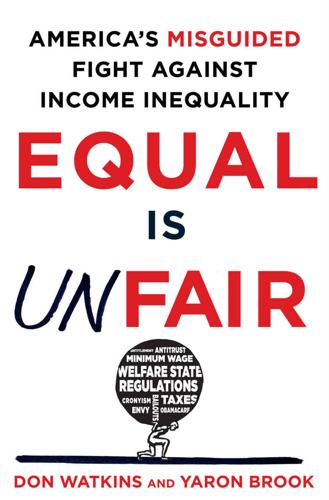
Equal Is Unfair: America's Misguided Fight Against Income Inequality
by
Don Watkins
and
Yaron Brook
Published 28 Mar 2016
But the inequality alarmists invariably package the issue of inequality with things that someone using an individualist standard of value could legitimately oppose: stagnating wages, skyrocketing health care costs, declining mobility, high unemployment, the failure of government to educate children. Those are all issues worthy of discussion and debate. But they shouldn’t be treated as problems of inequality: we would be concerned about stagnating wages even if everyone’s wages were stagnating equally, or about a failing education system even if children were equally ignorant. Reject collectivist terminology.
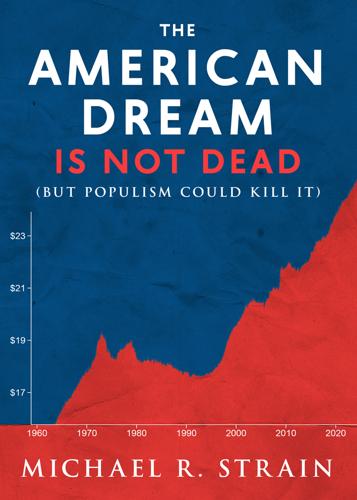
The American Dream Is Not Dead: (But Populism Could Kill It)
by
Michael R. Strain
Published 25 Feb 2020
Figure 9 shows real wages increased for the bottom half of the earnings distribution between 1996 and 2003, and then stagnated even during the expansion of the 2000s until roughly 2014. Combined with the data above, this means Americans in the bottom half of the skills matrix experienced decreased employment opportunities and stagnating wages for those with jobs for nearly a decade. No wonder they were open to “populist” messages! Other data supports this argument. Figure 10 shows that real median market income adjusted for family size steadily increased during the 1990s but then dropped during the two recessions, such that it only exceeded its 2001 peak in 2014.
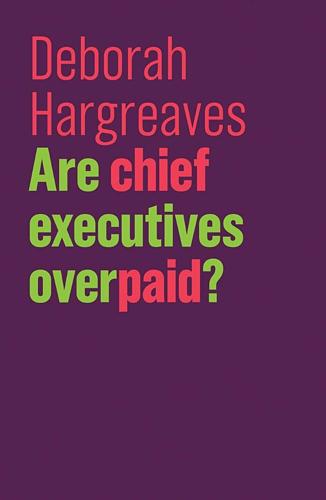
Are Chief Executives Overpaid?
by
Deborah Hargreaves
Published 29 Nov 2018
Governments have been captured by business and failed to act on excessive pay at the top, politicians and public servants have sought careers in the private sector, and academics have bolstered the edifice while also feasting on the crumbs from the corporate table. In this book, I am taking a look at how we built a super-elite class of multi-millionaire captains of industry and the implications this has for the economy, for the rest of the workforce and for us as a society. Soaring top pay and stagnating wages for the workforce have driven a sharp rise in inequality and fed perceptions of unfairness, undermining morale and faith in the system itself. This analysis is a subjective description of what I have seen during my career and draws on lots of research done by the High Pay Commission which I chaired in 2010–11 and the High Pay Centre think tank which I set up in 2012.
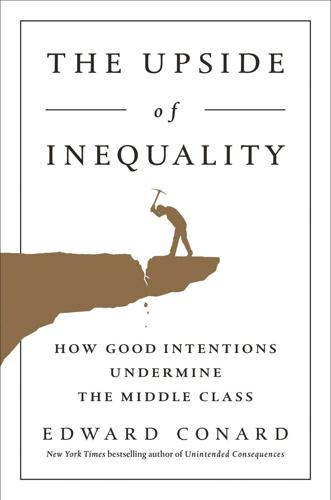
The Upside of Inequality
by
Edward Conard
Published 1 Sep 2016
To advocate both for more immigration and for faster wage growth for the working and middle class is to work at cross-purposes. It is a stretch to assume low-skilled immigration adds proportionally to constrained resources and disingenuous to suggest that it is politically verboten to believe otherwise. It is an even greater stretch to pretend that the rising income of the 1 percent is responsible for the stagnating wages of others. Quite the opposite: the growing success of the most successful Americans has put upward pressure on employment and wage growth. Part II DEBUNKING MYTHS: Why Mitigating Inequality Is Not the Solution Chapter 3 THE MYTH THAT INCENTIVES DON’T MATTER Rather than acknowledging that trade and immigration have disproportionately slowed middle- and working-class wage growth, and that the outsized success of America’s 0.1 percent is pushing up wages and employment, proponents of income redistribution have turned to a variety of arguments to blame the success of the 0.1 percent for the slow income growth of the middle and working classes.
…
Nor does pretax income account for changes to income tax rates and the growth of government benefits—both cornerstones of the government’s efforts to redistribute income. It is disingenuous, for example, to pay senior citizens Social Security and Medicare, and then, when they stop working because of this new income, point only to the loss of their formerly earned income as an indication of stagnating wages. In total, all of these uncontested adjustments—size-adjusted households, healthcare, taxes, and government-transfer payments—increased median household income growth between 1979 and 2007 not from 2 percent to 20 percent, but from 2 percent to 34 percent—in line with the earnings growth of full-time workers.26 Applying these adjustments to income quintiles shows virtually identical income growth across the bottom 80 percent: 32 percent growth in the poorest quintile’s household income, 34 percent at the median, and 38 percent at the sixtieth to the eightieth quintile.

Essential: How the Pandemic Transformed the Long Fight for Worker Justice
by
Jamie K. McCallum
Published 15 Nov 2022
Yet as organized labor’s power plummeted, so did their ability to moderate the metronome of American capitalism. The result: the slow return of a long-hours economy that has barely registered as a complaint among the largest official labor organizations.8 This is unfortunate, since the long-hours economy has hit low-income workers the hardest. Stagnating wages, declining union density, and rising social precarity have meant that low-wage workers simply can’t afford to work less. Moreover, the jobs are still pretty bad, and caregiving organizations still compete with fast-food franchises to retain their workforce. In New York City, the Ain’t I a Woman?!
…
As a reaction to the problems this causes, liberal reformers begin a countermovement to “re-embed” the economy in the social sphere, submitting it to democratic oversight. These changes are cyclical. Think of the New Deal after the Great Depression and then the neoliberal countermovement against the legacy of the New Deal. After decades of rising inequality, stagnating wages, longer hours, austerity, growing indebtedness, and weaker social protections from risk shifts, popular sentiment during the pandemic suggested reason for cautious optimism. The electoral refutation of Trump and support for social spending meant that against all odds the pendulum had reached its apex and was beginning to swing back.

Confronting Capitalism: How the World Works and How to Change It
by
Vivek Chibber
Published 30 Aug 2022
This eBook is licensed to , @gmail.com on 08/31/2022 4 BEYOND CAPITALISM There is a moral and a political takeaway from the preceding chapters. The moral one is that capitalism is, at its very core, an unjust economic system. It consigns the vast majority of the population to economic insecurity, to low or stagnating wages, compels them to surrender their autonomy, pits them against one another—and all this is built into the system. The political takeaway is that the distribution of power in capitalism serves to maintain and support the injustices. The system has survived for centuries, not because working classes have failed to notice its unfairness, or because they’re somehow happy with it.

Brexit: What the Hell Happens Now?: The Facts About Britain's Bitter Divorce From Europe 2016
by
Ian Dunt
Published 11 Apr 2017
More than ever before, people are questioning the European project. It is a component, perhaps, of a broader global trend, finding its most grotesque expression in Donald Trump in the US. Populists – typically of the right but occasionally of the left – have proved adept at channelling anger over stagnating wages, economic insecurity and globalisation into an attack on the status quo and an affirmation of national, religious or cultural identity. This has been a long time coming. Brussels is terrible at making its case. It has failed to show how it helps the public. Think for instance of the 56% Leave vote in Cornwall, which will receive £2.5 billion from the EU between 2000 and 2020, and which also benefits from the legal protections on Cornish pasties.

Automation and the Future of Work
by
Aaron Benanav
Published 3 Nov 2020
Instead they point, however fitfully, toward a world of generalized human dignity, one with fewer borders and boundaries. No matter how large they become, these protests have so far been unable to escape the limits confronted by all struggles over the collective reproduction of the working class, whose deterioration, under the pressures of stagnating wages, employment insecurity, and welfare-state retreat, has been extreme. These movements fail to rise from the level of reproduction to that of production, even when they call forth and combine with strikes in what remains of the industrial core. However much hope they inspire amid the catastrophe of the present, the 2020 COVID-19 pandemic notwithstanding, disruptive protests in our era have so far lacked a vision of a wholly different world: in which the infrastructures of capitalist societies are brought under collective control, work is reorganized and redistributed, scarcity is overcome through the free giving of goods and services, and our human capacities are correspondingly enlarged as new vistas of existential security and freedom open up.

Makers and Takers: The Rise of Finance and the Fall of American Business
by
Rana Foroohar
Published 16 May 2016
12 How did this sector, which was once meant to merely facilitate business, manage to get such a stranglehold over it? That is the question this book will strive to answer, in particular by examining just how the rise of finance has led to the fall of American business, a juxtaposition that has rarely been explored. Many of the perverse trends associated with financialization, such as rising inequality, stagnating wages, financial market fragility, and slower growth, are often (rightly) spoken about in social terms and in highly politicized ways—with polarizing discussions of the 1 percent versus the 99 percent, and Too Big to Fail banks versus profligate consumers and rapacious investors. Indeed, the terms makers and takers were used in the 2012 US election cycle by conservative politicians to denigrate half the American population (an issue I’m hoping this book will go some way toward rectifying by redefining those terms).
…
At the same time, a broad range of academic research shows that rising debt and credit levels stoke financial instability.16 And yet, as finance has captured a greater and greater piece of the national pie—its share of the US economy has tripled in the postwar era17—it has, perversely, all but ensured that debt is indispensable to maintaining any growth at all in an advanced economy like the United States, where 70 percent of output is consumer spending. Stagnating wages and historically low economic growth can’t do the trick, so debt-fueled finance becomes a saccharine substitute for the real thing, an addiction that just gets worse and worse.18 As the economist Raghuram Rajan, one of the most prescient seers of the 2008 financial crisis, argued in his book Fault Lines, credit has become a palliative to address the deeper anxieties of downward mobility in the middle class.
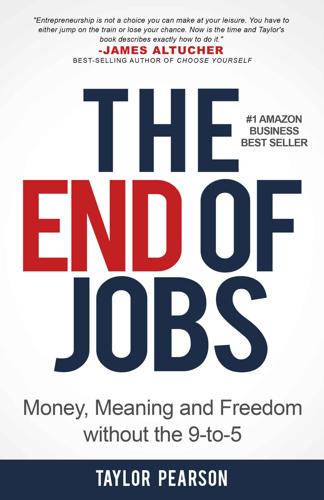
The End of Jobs: Money, Meaning and Freedom Without the 9-To-5
by
Taylor Pearson
Published 27 Jun 2015
Eventually she became his office manager and they worked together and built something ambitious and meaningful. A law practice that created a level of freedom out of reach of their parents who had grown up on a rural farm. Unlike our parents’ generation, there isn’t a lot of upward trajectory in that path anymore. More student debt and stagnating wages would mean a larger debt to pay off for her and her husband, and less income to pay it off with. Even if a couple did manage to replicate it, it would, for many, feel dramatically less fulfilling. It wouldn’t be much of a stretch. It would be working very hard to end up somewhere that wasn’t compelling or inspiring to be in the first place.

The Driver in the Driverless Car: How Our Technology Choices Will Create the Future
by
Vivek Wadhwa
and
Alex Salkever
Published 2 Apr 2017
In factories, robots marched steadily inward, thinning the ranks of unskilled and semi-skilled human workers even as efficiency soared and prices of the goods produced plummeted. This happened not only in the United States but also in China and other cheap-labor locales; a robot costs the same in Shanghai or Stuttgart or Chicago. And, around the time when computers first arrived, we began to experience a stubborn stagnation. Wages for the middle class seemed to remain depressed. The optimism of the baby-boomer era gave way to pessimism as the industrial heartlands hollowed out. Even the inevitable economic cycles seemed less forgiving. In the 1990s and early 2000s, the United States began to experience so-called jobless recoveries.
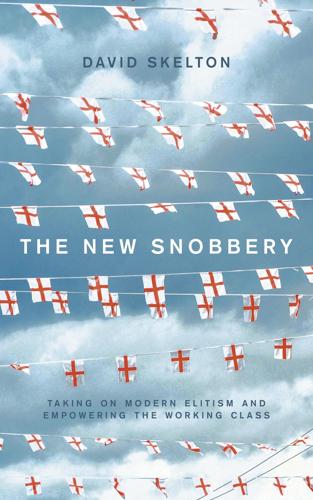
The New Snobbery
by
David Skelton
Published 28 Jun 2021
As mentioned above, these communities have been hit by decades of stagnation since the loss of industry, damaged by languishing real wages since 2008 and were amongst the hardest hit by the economic impacts of Covid. Political inequality has seen working-class voices marginalised, with some 85 per cent of MPs being graduates; economic inequality has seen hard work go unrewarded, with almost two decades of stagnating wages; educational inequality sees less intelligent rich children overtake poorer children by the age of six. White working-class boys – hardly a fashionable group to champion – have become the most educationally disadvantaged group in the country. NEW SNOBS AND OLD SNOBS? For a while, snobbery seemed to be restricted to a few cranks and eccentrics.
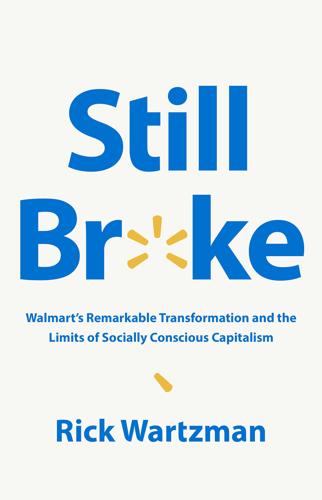
Still Broke: Walmart's Remarkable Transformation and the Limits of Socially Conscious Capitalism
by
Rick Wartzman
Published 15 Nov 2022
“Walmart beats the bold out of you,” she told Goonan. In 2016, as Walmart raised its starting wage to $10 an hour, Fortune named the company to its annual “Change the World” list. “No issue is more central to this year’s contentious US presidential election than the anxiety of the average American worker about stagnating wages,” the magazine said. “But while Hillary Clinton and Donald Trump attempt to woo voters with their plans, Walmart is taking action.” It is tempting to cling to the belief that companies like Walmart can change the world, especially at a time when government is so polarized and dysfunctional.
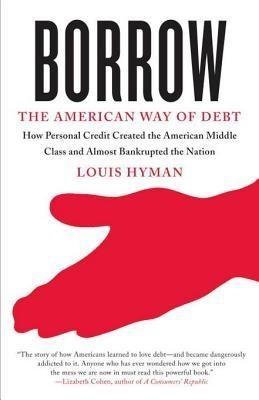
Borrow: The American Way of Debt
by
Louis Hyman
Published 24 Jan 2012
Our answer is always no, but admittedly we’re in a better position than most retailers to resist the pressure.”68 Yet the underlying economy was changing, and department store credit no longer made sense. Department store credit had flourished in the prosperous postwar economy. It had been easy to lend when most people got annual raises and kept their jobs. The 1970s economy of rising unemployment and stagnating wages made deciding to whom to lend more challenging. Moreover, banks and stores wanted opposite practices from their borrowers. Banks wanted interest, which meant slow repayment, and stores wanted more sales, which meant quick repayment.69 With budgets tightened, the banks and borrowers’ interests were more aligned.

Tomorrow's Capitalist: My Search for the Soul of Business
by
Alan Murray
Published 15 Dec 2022
People had experienced the painful effects of markets gone haywire. The invisible hand had developed serious arthritis. And as the economy recovered, everyone looked around and saw an enormous and widening gap between the very rich and the working poor, between the ample rewards going to the owners of capital and the stagnating wages being paid to labor, between the plight of the protected few and the vulnerable many. The irony of the moment was that even as capitalism was being reconsidered in the US and Europe, it was scoring its greatest global triumph. China was soaring, largely from its embrace of market-based policies, and the result was the greatest reduction in poverty in the history of the world.
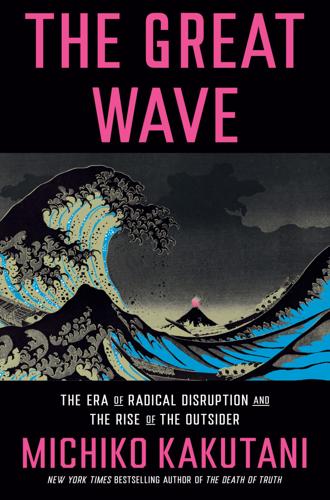
The Great Wave: The Era of Radical Disruption and the Rise of the Outsider
by
Michiko Kakutani
Published 20 Feb 2024
One 2020 study found that 52 percent of Americans under the age of forty-five became unemployed, were put on leave, or had their work hours reduced because of COVID. As a result, the pandemic heightened the rage that had been building for years among members of the working and middle classes, who found that stagnating wages and vanishing social mobility had put the tent poles of the American dream (a steady job, a house, college for the kids) increasingly out of reach. COVID would unleash a torrent of changes—some immediately apparent; others that continue to unfurl, triggering side effects of their own. For instance, the adoption of work-from-home protocols during the pandemic led to the embrace of remote work models, and the decision of many businesses, post-crisis, to implement hybrid systems with employees returning to their office cubicles only three or four days a week.

Age of the City: Why Our Future Will Be Won or Lost Together
by
Ian Goldin
and
Tom Lee-Devlin
Published 21 Jun 2023
A common thread of all these populist movements is the notion that mainstream politicians, business leaders and media figures cocooned in big cities have let the rest of their countries down and lost interest in ‘left behind’ places and people. These populist revolts against dynamic cities are rooted in real grievances based on stagnating wages and soaring inequality. A transformational effort to even out economic opportunity is long overdue. But undermining dynamic cities is not the way to do that. Cities like London, New York or Paris – and in the developing world Mumbai, Cairo or Lagos – are engines of economic growth and job creation without which their respective national economies would be crippled.
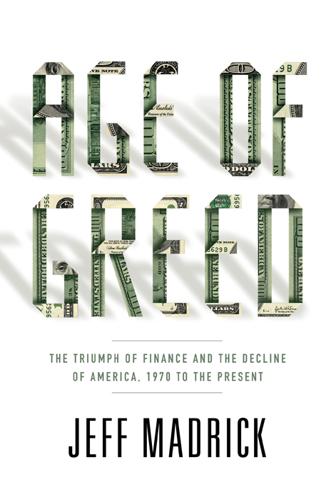
Age of Greed: The Triumph of Finance and the Decline of America, 1970 to the Present
by
Jeff Madrick
Published 11 Jun 2012
Many economists hailed the resulting low inflation that began in the 1990s as the beginning of a new stable age of ideal growth—which became known as the Great Moderation. Much the opposite is more likely. The anti-inflationary policies were adhered to too firmly, and contributed significantly to slower rates of growth, higher levels of unemployment, the disappointing growth rate of productivity until the late 1990s, and stagnating wages. Extreme speculative excesses arose in other areas while Friedman’s anti-inflation heirs were in charge—in high-technology stocks in the late 1990s and mortgage finance in the 2000s, to take but the starkest examples. Friedman’s assurance that financial deregulation would work turned into an empty promise, with disastrous consequences.
…
Volcker’s reputation grew so large, in fact, that Alan Greenspan, his successor in 1987, felt only one obligation, which was to show that he could be as tough an inflation fighter as Volcker. Volcker became the heroic man of action to Milton Friedman’s man of ideas, and did as much or more to make low inflation the nation’s policy priority for the next thirty years, regardless of the costs paid in persistent slower economic growth, high levels of unemployment, and stagnating wages. Volcker was not an ideologue or a Friedmanite. He adopted Friedman’s monetarist policies when it suited his purpose—using them, without admitting it, as a cover for creating a steep recession to stop inflation. He never fully endorsed monetarism: that growth of money alone caused inflation, the monetarists’ view that all that needed to be done to halt inflation was slow the growth rate of the money supply.
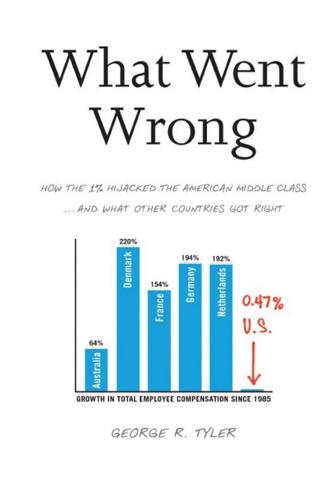
What Went Wrong: How the 1% Hijacked the American Middle Class . . . And What Other Countries Got Right
by
George R. Tyler
Published 15 Jul 2013
Here is German journalist Thomas Schulz, writing in Hamburg-based Der Spiegel in August 2010: “One in eight American adults and one in four children now survive on government food stamps. These are unbelievable numbers for the world’s richest nation…. They face a bitter reality of fewer and fewer jobs, decades of stagnating wages, and dramatic increases in inequality…. Income inequality in the United States is greater today than it has been since the 1920s.”72 This reads as though Schulz is writing about some misfiring society in a far-off land. America today has by far the most severe income disparity of any rich democracy, nearly identical to the income disparity in Turkey and more than twice as skewed as other rich democracies like Australia.
…
In hindsight, it’s clear that CEOs pursuing their own magnified self-interest within this new environment enabled business leaders to engage in de facto class warfare as they strove to seize a larger share of the gains from growth. But class warfare was the last thing on their minds. Like the John Laws of yesteryear, their motivation was simply to increase their incomes at anyone else’s expense. They succeeded in stagnating wages, lowering taxes, slowing investment, and weakening the social safety net—never mind the long-term interest of shareholders, the urgency of driving productivity, or the tens of millions including children lacking health care or bedding down hungry every night in their own cities. Most seem indifferent to the reality that one of every two American children will need food stamps at some point or that tens of millions live on the margins in a shadowy economic netherworld, much like subsistence farmers in some far-off, developing nation.

The Global Minotaur
by
Yanis Varoufakis
and
Paul Mason
Published 4 Jul 2015
In a country that prided itself on the fact that, at least since the 1850s, real wages had risen steadily, thus giving every generation of workers the hope that their children would be better off than they were, real wages stagnated. To this day, they have not even recovered their 1973 real purchasing power. Figure 4.1 Stagnating wages, booming productivity (indices using 1973 as base year) Meanwhile, labour productivity accelerated. The employment of new technologies, the intensification of labour processes (often helped by the rising fear of unemployment) and the increasing direct investment from abroad (e.g. German and Japanese firms that sought to boost their profitability by shifting operations to the US) all gave rise to the impressive labour productivity curve.

The Cost of Inequality: Why Economic Equality Is Essential for Recovery
by
Stewart Lansley
Published 19 Jan 2012
As the wage share started to fall well below 60 per cent, a growing gap emerged in how to maintain levels of consumption. It is no more sensible for the national wage bill to add up to significantly less than the volume of available consumer goods than it is to greatly exceed it. While the latter contributes to inflation, the former brings recession. Stagnating wages suck purchasing power out of the economy and can prevent growing national output being sold.60 Excessive profits also feed higher incomes at the top, create financial surpluses and concentrate economic power. These imbalances upset the processes of economic equilibrium necessary to prevent instability.

Mythology of Work: How Capitalism Persists Despite Itself
by
Peter Fleming
Published 14 Jun 2015
The birth of managerialism corresponded with the dissolution of labour unions in the 1980s and was crafted as the most suitable social technology for combatting workers and reforming their understanding of the employment relation, especially apropos abandonment, zero-hour contracts, so-called flexible employment arrangements, subcontracting and a stagnating wage packet. Evoking the rather neutral sounding language of ‘change management’, the discourse of managerialism was the second line of attack on the Fordist employment relationship following the state’s use of violence (i.e. the police and the military). But even after the dust had settled somewhat, the anti-people datum of managerial ideology continues to this day to provoke conflict in the workplace.

The Trouble With Billionaires
by
Linda McQuaig
Published 1 May 2013
In the UK, the independent High Pay Commission has highlighted this disconnect between executive pay and corporate results. Commission chair Deborah Hargreaves noted that ‘when pay for senior executives is set behind closed doors, it does not reflect company success’.11 Indeed, despite middling business performance and stagnating wages for ordinary workers, the median compensation of the FTSE 100 CEOs more than quadrupled between 1998 and 2010, and then rose by another 27 per cent by 2011. Even David Cameron’s government felt obliged to acknowledge that soaring corporate pay was not being driven by strong market results. Responding to public outrage over executive pay in autumn 2011, Business Secretary Vince Cable conceded that over the past decade ‘we have seen extreme increases in top executive pay which appear to be completely unrelated to the performance of companies’.
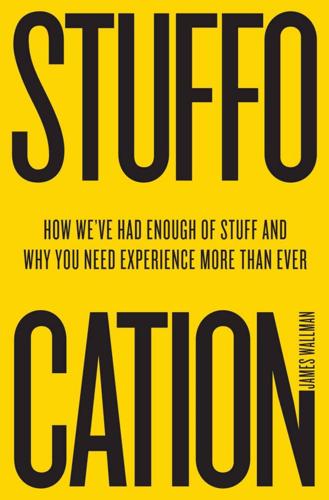
Stuffocation
by
James Wallman
Published 6 Dec 2013
Meanwhile, GDP and the materialistic system it measures and promotes, like the Roman empire, has marched on unchallenged – until now. Nicolas Sarkozy Has a Problem Towards the end of 2007, less than a year into his presidency, Nicolas Sarkozy had a problem – the financial crash, which, as it ran into other headwinds, like overconsumption, stagnating wages, inequality, and rising resources costs, was fast becoming the Great Recession. The fall in GDP was hardly his fault. The whole world was feeling the effects of the meltdown. But that did not matter to the people who had put him in the Élysée Palace, the French voters, who would also decide if he would remain there after the next election.
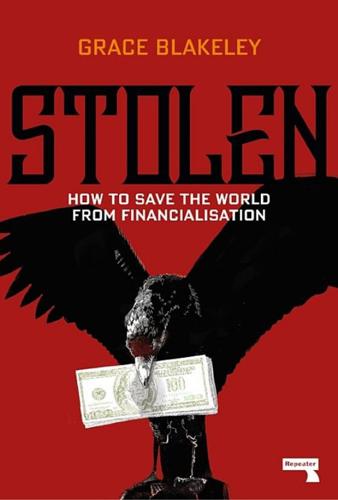
Stolen: How to Save the World From Financialisation
by
Grace Blakeley
Published 9 Sep 2019
The solution to this problem was to change the engine of demand: rather than business investment and state spending fuelling economic growth, from the 1980s debt-fuelled consumption came to be the main driver of increasing output.29 Increases in consumption came to outstrip increases in wages. In the context of stagnating wages, the gap between income and expenditure would be covered by personal borrowing. 1988 was the first year ever that consumers’ expenditure exceeded their incomes.30 The Lawson boom — the economic boom named after the Chancellor who presided over it — saw tax cuts, a reduction in interest rates (once the union movement had been dealt with, of course), and an across-the-board increase in household borrowing and spending.
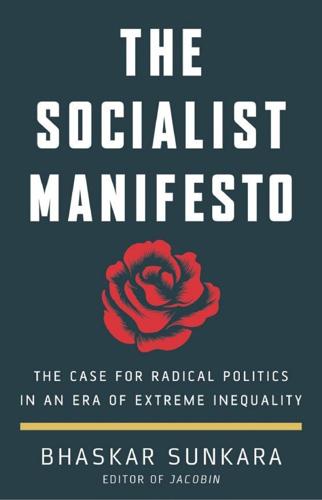
The Socialist Manifesto: The Case for Radical Politics in an Era of Extreme Inequality
by
Bhaskar Sunkara
Published 1 Feb 2019
Rather, it came from the Right, in the form of the anti-government Tea Party. The Tea Party was mainly composed of embittered, middle-class whites who were already firmly within the Republican tent but whose rage helped push the party to the right. For the broader public, Obama’s policies were enough to justify a second term in office. Yet the trend of stagnating wages and declining opportunity continued. Not only that, but the Democratic Party was eroded from within by mismanagement and neglect. During the Obama administration, the Democrats lost control of thirteen governors’ mansions, leaving the party with its lowest number since 1920—a paltry sixteen.
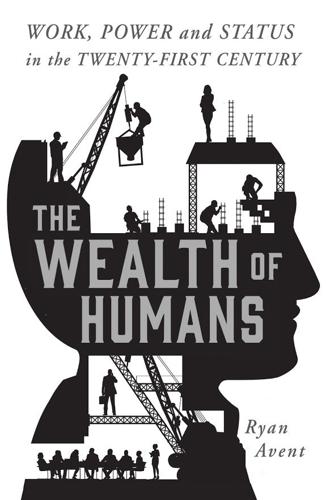
The Wealth of Humans: Work, Power, and Status in the Twenty-First Century
by
Ryan Avent
Published 20 Sep 2016
At the same time new technologies will make it ever easier to automate the simple work in factories, warehouses and shops that has historically accounted for a huge share of global employment. Technologies will also alter fields such as education and medicine, by allowing a few teachers or doctors to do work previously done by many. The economy, and society, will try to adjust. That adjustment will mean stagnating wages for many workers, rising inequality, and a tenuous and fading connection to the world of work for many others. Workers are unlikely to take these woes lying down. Something has to give. Either society will find ways to shore up work or develop substitutes for it, or workers will use the political system to undermine the forces disrupting their world.
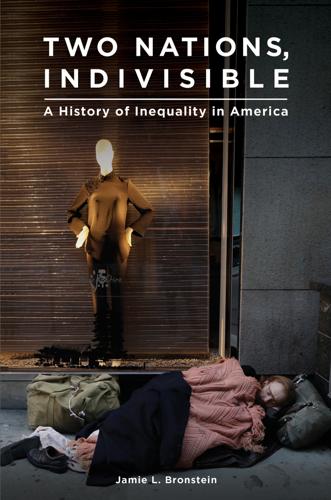
Two Nations, Indivisible: A History of Inequality in America: A History of Inequality in America
by
Jamie Bronstein
Published 29 Oct 2016
The amendment never became law despite its supporters being granted an extension of time for its ratification. Large numbers of women, including, for the first time, mothers of young children, were moving into the workforce. This movement helped to disguise growing economic inequality, as women’s wages offset the stagnating wages of their husbands. As they had been during the advent of the first textile factories in the nineteenth century, women were increasingly attractive to employers in the 1970s because firms were facing global competition, and women could be paid less than men. Some women achieved managerial positions, although they tended to be at the bottom of management hierarchies in the least-well-paid jobs.

Pirates and Emperors, Old and New
by
Noam Chomsky
Published 7 Apr 2015
With the collaboration of local authorities in the standard neocolonial fashion, port operations could be transferred there, strikes broken, and Israeli ports transferred to unaccountable private hands.51 It is not surprising that Israel is coming to resemble the U.S., with very high inequality and levels of poverty, stagnating wages and deteriorating working conditions, and erosion of its formerly well-functioning social systems. As in the U.S., the economy is based heavily on the dynamic state sector, sometimes concealed under the rubric of military industry. It is also not surprising that the U.S. should favor arrangements that make its outpost look pretty much like the sponsor itself.

Rethinking the Economics of Land and Housing
by
Josh Ryan-Collins
,
Toby Lloyd
and
Laurie Macfarlane
Published 28 Feb 2017
This has triggered a shift in political attitudes on issues of housing and resulted in a much greater focus on meeting homeowners’ aspirations.4 Overall these factors represent a profound shift in the way that land and property has been perceived in British society. Whereas 100 years ago houses were mostly regarded as simply somewhere to live, today homeownership is promoted as an investment opportunity which offers long-term financial security in the face of stagnating wages, dwindling pensions and reduced state welfare provision. To politicians and much of the general public alike, houses are no longer perceived as universal consumption goods but rather as vehicles for accumulating wealth. Homeownership has become perceived by many as ‘the essential step to obtain membership of an expanding middle class for whom housing equity was pivotal in a broader lifestyle of credit based and housing equity fuelled consumption’ (Forrest et al., 1999).
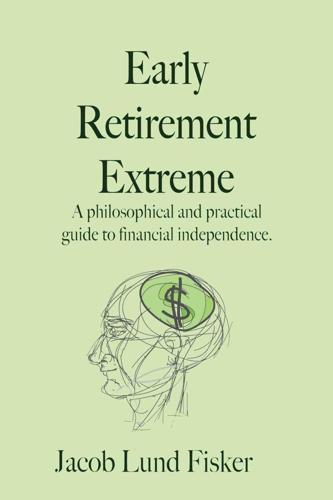
Early Retirement Extreme
by
Jacob Lund Fisker
Published 30 Sep 2010
Having a narrow but deep knowledge means that one doesn't have much broad knowledge or broadly applicable skills. The marketplace compensates for this by making available, at a price, the products produced by other specialists. However, the individual specialist is subject to the risk of being stuck with a useless skill if the demand for their particular skill suddenly vanishes due to outsourcing, or stagnating wages due to competition. Specialists that have invested their entire knowledge in skills useful for employment risk suddenly finding themselves without income in a changing world. Hence a lot of effort goes into continuously acquiring new skills while discarding old ones. Many find it stressful to keep up with the technological drift of their specialization as new methods are continuously introduced, requiring them to discard previously acquired knowledge.
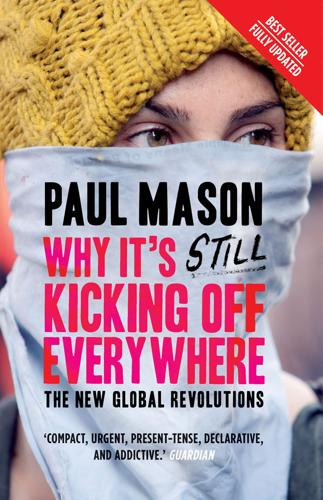
Why It's Still Kicking Off Everywhere: The New Global Revolutions
by
Paul Mason
Published 30 Sep 2013
For former East German employees, the same measure leapt by 25 per cent after unification—only to stagnate after 1999, and fall back by around 2.5 per cent between 2003 and today.7 Of course, there are places where real wages are rising—notably, peripheral Europe and the emerging markets. But the figures show real wages falling in the 2000s across many of the West’s heartland countries and in a variety of different economies: in deflationary Japan; in the highly socialized economy of Germany; in the free-market USA. And the shortfall between stagnating wages and consumption growth is met by credit. The results of all this look benign—until, that is, they turn bad. There is a ‘heroic’ period of globalization, beginning in 1989 and ending around 1999, during which China’s entry into the world market helps suppress inflation; where falling wages are offset by a seemingly sustainable expansion of credit; where house prices rise, allowing the credit to be paid off and a whole bunch of innovations are suddenly deployed—above all mobile telephony and broadband Internet.

The Myth of Capitalism: Monopolies and the Death of Competition
by
Jonathan Tepper
Published 20 Nov 2018
Figure 4.9 The Great Suppression: Falling Unions and Increasing Licensing, 1950s–Today SOURCE: Taylor Mann, Pine Capital. Workers are now faced with pressure on all sides – governments that require excessive licensing to work, and corporates that require workers accept onerous employment terms. Those terms include: noncompete agreements, forced arbitration, stagnating wages, and burdensome occupational licensing. Without any form of countervailing power, American workers are left to fight alone. It is a toxic cocktail for the average American. The hangover from increased corporate power is real, with many struggling to meet basic needs. This is not the free capitalism we need or the hope that drove the “traitorous eight” in Silicon Valley decades ago.
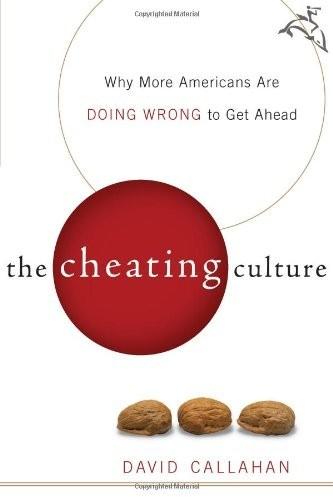
The Cheating Culture: Why More Americans Are Doing Wrong to Get Ahead
by
David Callahan
Published 1 Jan 2004
He writes: "If you believe that things are going to get better—and that you have the capacity to control your life—trusting others isn't so risky. Generalized trusters are happier in their personal lives and believe they are masters of their own fate."37 It's not easy to feel like you can control your life in America's postindustrial economy. In a winner-take-all market plagued by stagnating wages, downsizing, and rising prices for key life necessities like health care and housing, many people have good reasons to be pessimistic and resentful. Polling during the boom periods of both the 1980s and 1990s showed that even as the economy grew by leaps and bounds, many people didn't believe that their own incomes would rise.

The Deficit Myth: Modern Monetary Theory and the Birth of the People's Economy
by
Stephanie Kelton
Published 8 Jun 2020
But we’ll see in more detail in the next chapter how money can be channeled through grants from federal government programs, helping make state university systems tuition free, or at least much more affordable than they are now. MMT’s lens also shows how we could easily and quickly retire all student debt through the federal government, freeing up income that could be spent back into the economy, creating millions of new private sector jobs.36 Finally, the twin trends of stagnating wages coupled with increasing education requirements in job applications both result from employers holding all the cards. With MMT’s tools, we can restore full employment and tight labor markets, helping return bargaining clout to workers. As with the other deficits we’ve examined, when we stop asking, How are we going to pay for it?
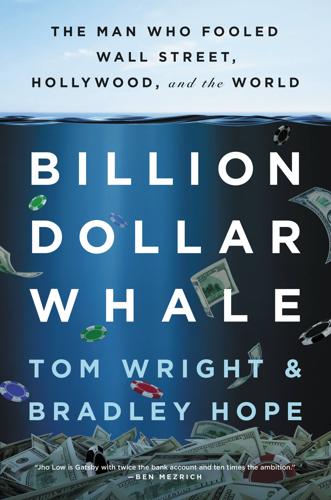
Billion Dollar Whale: The Man Who Fooled Wall Street, Hollywood, and the World
by
Tom Wright
and
Bradley Hope
Published 17 Sep 2018
The protesters knew nothing of what Low had carried out at 1MDB. But corruption in Malaysia already was eating away at the nation’s social fabric, from vote buying by UMNO, the ruling party, at election time to the regular backhanded payments by businesses to win government contracts. While middle-class Malaysians dealt with stagnating wages, Malaysia’s elite was accruing greater wealth, and it was fueling discontent. In 2006, a group of opposition politicians, lawyers, and anticorruption activists had started a movement called “Bersih”—the Malay word meant “clean”—seeking reforms to ensure fair elections. In 2007 and 2011 Bersih protesters, wearing trademark yellow T-shirts, had taken to the streets, clashing with police.

Don't Be Evil: How Big Tech Betrayed Its Founding Principles--And All of US
by
Rana Foroohar
Published 5 Nov 2019
On the one hand, there is something magical about the way these companies allow people to monetize resources they already possess—a home, a car, their free time. On the other, this model is a slippery slope that, some argue, ends with workers being taken advantage of. Many experts believe that the rise of the gig economy is a key reason for stagnating wages, as it has accentuated the power imbalance between workers and companies that has been increasing for the past forty years or so with the decline of unions, and the deregulation of industry in general. The Plight of the Gig Worker “Gig work” seems to have reached a new apex with the rise of companies like Uber.

We Are All Fast-Food Workers Now: The Global Uprising Against Poverty Wages
by
Annelise Orleck
Published 27 Feb 2018
Between 2012 and 2016, living-wage activism earned $61.5 billion in raises for 19 million workers, twelve times what Congress gave workers when it last raised the federal minimum wage in 2007; 11.8 million workers in twenty-five states, cities, and counties won raises in 2016. On January 1, 2017, twenty-one states, twenty-two cities, four counties, and one region increased wages. After decades of stagnation, wages for the bottom 40 percent of American workers were finally starting to rise. That is a real victory.8 Workers know this is just a first step, says Laphonza Butler, president of California’s hospital and home-healthcare workers’ union and co-chair of the Los Angeles living-wage coalition. “Fifteen dollars an hour is only $31,000 a year.
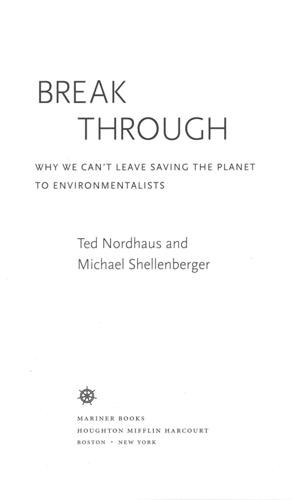
Break Through: Why We Can't Leave Saving the Planet to Environmentalists
by
Michael Shellenberger
and
Ted Nordhaus
Published 10 Mar 2009
The reason the median family income increased just 7 percent despite so many more two-income families was that the average real wages for nonmanagement workers had declined dramatically, from $631 per week in 1973 to $491 in 1993 (in 2004 dollars).23 Young people were particularly affected. A thirty-year-old man earning the median wage in 1973 earned two-thirds more than what a thirty-year-old man had earned in 1953, while a thirty-year-old man in 1993 earned a quarter less than what a thirty-year-old man had earned in 1973.24 Stagnating wages were exacerbated by rising inequality, and this in turn fed increasing status insecurity. Between 1979 and 1989, the richest 1 percent of American households increased their income from $280,000 to $525,000 per year.25 It wasn’t just that people were working harder to earn less, but that they were doing so at a time when other people’s material success was being widely publicized in hit TV shows like Lifestyles of the Rich and Famous.

How Will Capitalism End?
by
Wolfgang Streeck
Published 8 Nov 2016
But we know – or ought to – that a break with the self-destructive mass consumerism that currently has the world in its grip will only be possible if greater sacrifices can be extracted from those who have profited most from the recent transformations of the capitalist economy, as opposed to those who have seen their life chances decline during decades of liberalization and globalization. A democratic departure from the life-threatening sedation provided by cheap-money capitalism would require new solutions to the problems which the latter has only worsened. Consumer credit as compensation for stagnating wages and a growing gap between top and bottom could become superfluous if all earned a decent wage. Better living and working conditions for the great majority would alleviate the need for yet more consumer toys to compensate for status anxiety, competitive pressure and increasing insecurity. This will not be possible without a revitalized trade-union movement that would help to end the ever more destructive exploitation of the human capacity to work and nurture families.
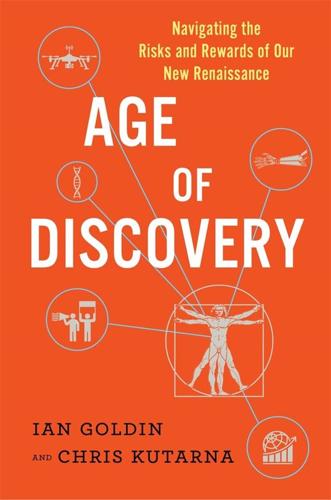
Age of Discovery: Navigating the Risks and Rewards of Our New Renaissance
by
Ian Goldin
and
Chris Kutarna
Published 23 May 2016
Civil liberties were restricted and dissent became unpatriotic, especially in the United States. People’s attention was drawn elsewhere: the apparent threat of multinational corporations diminished, and states and non-state militaries re-emerged as the principal villains in a colder, darker international system. In the meantime, rising returns to capital and stagnating wages in developed countries meant that, year by year, a larger and larger share of the money earned in these countries went to the already rich.45 As a result, from 2001 to 2007, total private wealth in North America and Europe—the total value of everyone’s houses, investments and other assets, minus debt—doubled, from $75 trillion to almost $150 trillion46—and the richest 10 percent of households held 65–70 percent of it.47 It was, for the developed world’s capitalists, their best half-decade ever in dollar terms.

The Blockchain Alternative: Rethinking Macroeconomic Policy and Economic Theory
by
Kariappa Bheemaiah
Published 26 Feb 2017
It is for this reason that when we talk about innovation, especially innovation which is going to replace cognitive and manual repetitive work, we also need to talk about the effect it has on capitalism (see Sidebar 3-1). What needs to be remembered is that as labor size gets reduced, it also lowers/stagnates wages. While this makes it almost impossible for the working class to insure itself, it is also a concern for central bankers, for as people are displaced from jobs, it will reduce aggregate demand, exasperate income inequality, and augment the disparity between savings and investment, which in turn will force down the price of borrowing money, i.e., the interest rate.
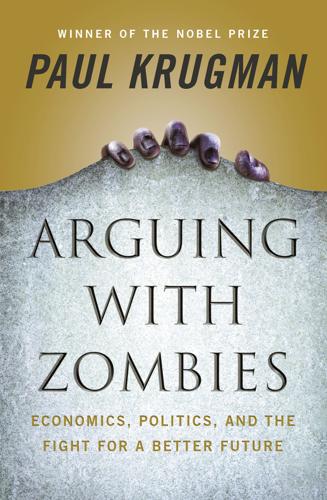
Arguing With Zombies: Economics, Politics, and the Fight for a Better Future
by
Paul Krugman
Published 28 Jan 2020
(Krugman), 343–44, 350 wildfire, growing risks of, 332 Will, George, 381 Wilson, William Julius, 292 When Work Disappears; The World of the New Urban Poor, 286–87 wing-nut welfare, 303 Wisconsin, Republican Party in, 369 Wolfe, Tom, Bonfire of the Vanities, 262, 270 Wolff, Edward, 270 working class: anti-worker bias in politics, 290, 318, 351–53 falling incomes of, 96, 244 family values of, 286 and health care, 352 and income inequality, 259–60, 272, 273 and “skills gap,” 167–68 stagnating wages of, 92, 168, 288, 289 tax increases on, 20, 221–23 and trade war, 372 and unions, 218, 289–90, 317 work opportunities available to, 286–87, 292 World Trade Organization (WTO), 247, 252 World War I, war debts from, 254 World War II: postwar economic growth, 219, 234 postwar trading system, 244, 250 wage controls in, 270 Wren-Lewis, Simon, 5, 385–86 “WSJ calculation,” 280 Yellen, Janet, 97 Yunus, Muhammad, 388 Zandi, Mark, 113 “zero lower bound” interest rates, 142–43, 153 zombie ideas: on climate change, 4 cutting taxes on the rich, 4, 215–17 eating people’s brains, 3–4 and health care, 216 on impossibility of universal health coverage, 4 invasion of, 259 in movement conservatism, 8 and racism, 4 Zucman, Gabriel, 238–39, 349 ALSO BY PAUL KRUGMAN End This Depression Now!

Chokepoint Capitalism
by
Rebecca Giblin
and
Cory Doctorow
Published 26 Sep 2022
But the music business (and arts industries more broadly), are “based on starving the plankton so that the whales can survive.”4 The reason creative workers are receiving a declining share of the wealth generated by their work is the same reason all workers are receiving a smaller share—we have structured society to make rich people richer at everyone else’s expense. The playing field has been tilted so far that a growing number of people are falling off the edge, beset by precarious employment, stagnating wages, high costs for education, housing and healthcare, and economic policies that prize shareholders over people and communities. This great tilting of the playing field, away from workers and toward owners, has a variety of causes, but the biggest is a radical theory of antitrust, driven by jurist and far-right cult-of-personality darling Robert Bork and exported by his disciples at the Chicago school of economics.

Democracy and Prosperity: Reinventing Capitalism Through a Turbulent Century
by
Torben Iversen
and
David Soskice
Published 5 Feb 2019
Many in the middle classes will see themselves as more closely aligned with the top because they either have good jobs and earnings, or if starting graduates they expect to move up the job ladder, or because they can still reasonably expect to see their children do well by acquiring the education needed in the new economy. We will refer to these groups as the new middle classes because they have made the leap into the new economy, at least from an intergenerational perspective. The old middle classes, by contrast, are those who have experienced stagnating wages because of skill-biased technological change, outsourcing, or import competition from the ECE countries or East Asia—the “hollowing out” of the middle—and who have low expectations that the educational system will allow their children to make the leap into the new economy. The old middle classes are stuck, and they will not simply split the difference between low and high redistribution and taxes by adopting middle positions.

The Job: The Future of Work in the Modern Era
by
Ellen Ruppel Shell
Published 22 Oct 2018
For millions of middle-class Americans, this is not exactly news. In the early 2000s many of us saw our net worth reflected less in our paychecks than in the inflated paper value of our homes and (to a far lesser degree) investments. This powerful “wealth effect” led to the glossing over of the dual problem of stagnating wages and precarious employment. As we’ve seen, since the 1980s temporary and contract work and self-employment have grown faster than have permanent, full-time jobs. Secure opportunities, especially those offering benefits and a possible career path, have certainly become scarcer, but that’s only part of the problem.
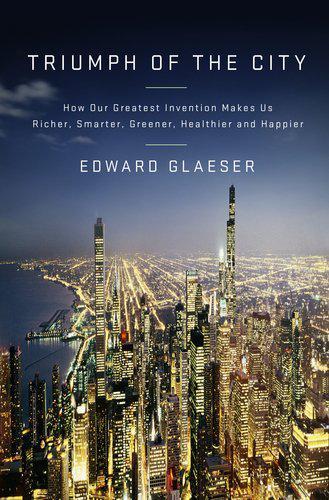
Triumph of the City: How Our Greatest Invention Makes Us Richer, Smarter, Greener, Healthier, and Happier
by
Edward L. Glaeser
Published 1 Jan 2011
Today, 40 percent of Manhattan’s payroll is in the financial services industry, the bulwark of a dense and still-thriving city. And even though some of these financial wizards helped give us the Great Recession, the city that housed them has weathered that storm, too. Between 2009 and 2010, as the American economy largely stagnated, wages in Manhattan increased by 11.9 percent, more than any other large county. In 2010, the average weekly wage in Manhattan was $2,404, which is 170 percent more than the U.S. average, and 45 percent more than in Santa Clara County, home of Silicon Valley, which pays the highest wages outside of Greater New York.
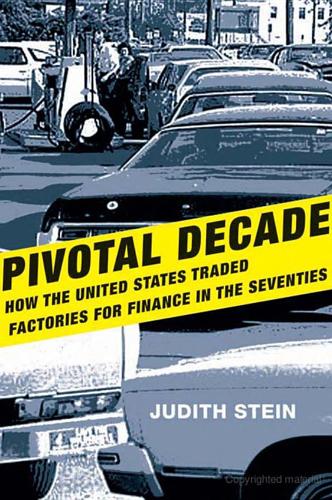
Pivotal Decade: How the United States Traded Factories for Finance in the Seventies
by
Judith Stein
Published 30 Apr 2010
The effects of such policies in a global economy shifted resources away from manufacturing—the “tradables”—into finance and housing. The recipe, aided by high-tech innovations, worked for a while, even as it produced what I call an Age of Inequality.13 Financing from abroad allowed Americans to maintain consumption despite stagnating wages and huge trade deficits. Recently, this model has failed to sustain its foremost selling point, prosperity. Signature industries, housing and financial services, placed the “world on the edge” in fall 2008.14 The worst never happened, but, as this is written, the nation is experiencing the nastiest and most intractable economic recession since the Great Depression.

Protest and Power: The Battle for the Labour Party
by
David Kogan
Published 17 Apr 2019
This stance also meant that a public sector wage freeze of 1 per cent and other cuts that looked like austerity would have to be accepted to appear to be responsible in government, just as Gordon Brown had done in 1997 in accepting the Conservative’s spending plans. Jonathan Ashworth, elected as MP in 2011, said in 2018: I think the problem was that we ran a campaign for five years focused on stagnating wages and on the lack of economic growth and then when it came to the general election, our economic policy was not radically different enough from Conservative policy. In 2015, the position of our party was to keep the public pay freeze in place as an example of how we too were going to be tough on the economy.

Fulfillment: Winning and Losing in One-Click America
by
Alec MacGillis
Published 16 Mar 2021
But somehow, one of the most liberal cities had lapsed into a local variant of Tea Partyism, a resentment of the grasping Other, and—this was key—it was not going to apologize for that. Katie Wilson spent months trying to make sense of this, and composed a ten-page essay on the failure of her effort. The crucial passage was this: The homelessness crisis is, after all, the convergence of trends any one of which reveals a social order on the rocks: soaring housing costs and stagnating wages; decades of cuts to safety net programs; an epidemic of depression, social isolation, and mental illness; self-medication and opioid overprescription; fraying community and family support networks; mass incarceration and systemic racism. The tent pitched in the greenway and the woman shooting up on the sidewalk are the tip of an iceberg of social catastrophe, intruding into public space in a manner impossible to ignore.
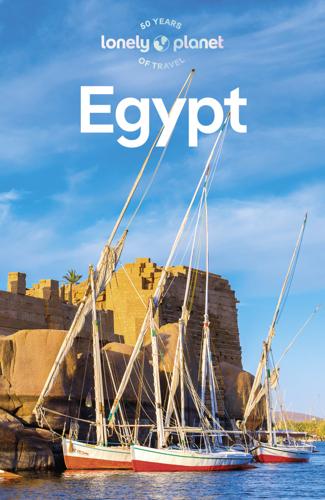
Lonely Planet Egypt
by
Lonely Planet
Although covered with much fanfare around the world, locally the parade evoked some pride but also resounding criticism of the event’s vast expense. Many Egyptians also commented on the inappropriate glorification of the past at the expense of the needs of the living, who are currently being squeezed by stagnating wages, rising prices and high unemployment. Over 30% of Egyptians now live below the poverty line on less than $3.20 a day and national debt has spiralled to US$370 billion, consuming over one-third of the country’s budget. Since March 2022, the Egyptian pound has lost 70% of its value and in 2023 Egypt became the IMF’s second-biggest client after Argentina.

The People: The Rise and Fall of the Working Class, 1910-2010
by
Selina Todd
Published 9 Apr 2014
Throughout 1962 and 1963 Gallup opinion polls found that people’s major concern was the high cost of living, as prices continued to increase.33 If rising prices caused women particular concern, many men found that attaining ‘affluence’ involved loss as well as gain. By the early 1960s, car workers were among the best paid manual workers, and many of them could earn more than white-collar workers if they signed up for overtime. Faced with public sector wage freezes and stagnating wages in skilled occupations, many men felt they had little choice but to opt for the well-paid but boring assembly line. Alf Chester was one of them. In 1959 he and his wife Mary had moved to Luton from their native north London. By 1963 they were buying their well-kept semi-detached house: ‘large gardens front and back, outside painted, net curtains’.
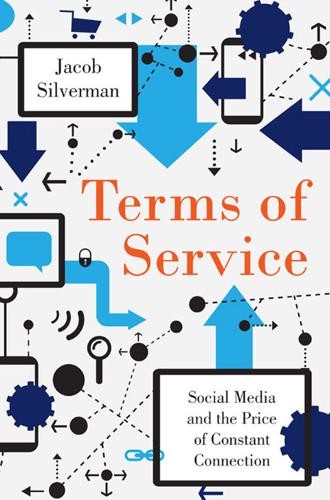
Terms of Service: Social Media and the Price of Constant Connection
by
Jacob Silverman
Published 17 Mar 2015
(Similarly, fast food, which was once considered a seasonal job for teenagers, has now become a career for many people with few other options, despite the industry’s poverty-level wages.) It’s difficult to conclude that these forms of work would be growing in popularity if the overall economy weren’t afflicted with widespread joblessness, stagnating wages, diminished worker rights, and an eroded social safety net. This is the environment that the sharing economy and labor markets are hoping to leverage, while perpetuating all of its worst qualities. Because rather than opening up new kinds of work, eliminating market inefficiencies, or bringing neighbors together, these platforms keep workers in a state of perpetual insecurity, making them seek lower and lower payments from remote, capricious employers who see them as disposable, one step above the automated machines that may one day replace them.

Behemoth: A History of the Factory and the Making of the Modern World
by
Joshua B. Freeman
Published 27 Feb 2018
Even more startling were the riots three years later, which damaged or destroyed scores of foreign-owned factories outside of Ho Chi Minh City. The disturbances began with a rally of workers protesting China’s deployment of an oil rig into waters claimed by Vietnam. But the protesters soon turned against nearby sneaker and clothing factories, many of which were Taiwanese, South Korean, Japanese, or Malaysian owned, angry about stagnating wages and foreign exploitation. A staff person at the Taiwanese Chutex Garment Factory reported that some eight thousand to ten thousand workers were involved in an attack on the plant, burning “everything, all of the materials, computers, machines.”63 In China, worker militancy has pushed up wages and improved conditions, aided by pressure from international labor rights groups and brand companies afraid of their reputations being sullied by stories of worker abuse.

The Relentless Revolution: A History of Capitalism
by
Joyce Appleby
Published 22 Dec 2009
Not being able to restrict entry to their trade as the craft unions could, unskilled workers turned to strikes, picketing, and public marches to gain attention. Riots were not uncommon. Buffeted by competition from Germany and the United States for their share in international markets, British industry fell on hard times. Job losses and stagnating wages became labor’s best recruiters. Prominent British intellectuals formed the Fabian Society to persuade the public to endorse such socialist measures as nationalizing major industries. Those who favored building a political movement won out. Within two decades the British Labour Party had displaced the Liberal Party as the principal rival of the Conservatives.
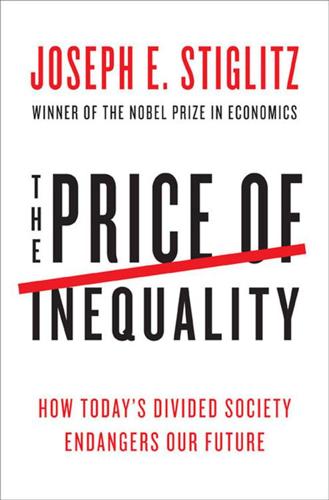
The Price of Inequality: How Today's Divided Society Endangers Our Future
by
Joseph E. Stiglitz
Published 10 Jun 2012
Members of America’s middle class have felt that they were long suffering, and they were right. For three decades before the crisis, their incomes had barely budged.7 Indeed, the income of a typical full-time male worker has stagnated for well over a third of a century.8 The crisis made these inequalities worse in innumerable ways, beyond the higher unemployment, lost homes, stagnating wages. The wealthy had more to lose in stock market values, but those recovered reasonably well and relatively fast.9 In fact, the gains of the “recovery” since the recession have accrued overwhelmingly to the wealthiest Americans: the top 1 percent of Americans gained 93 percent of the additional income created in the country in 2010, as compared with 2009.10 The poor and middle had most of their wealth in housing.

The Meritocracy Trap: How America's Foundational Myth Feeds Inequality, Dismantles the Middle Class, and Devours the Elite
by
Daniel Markovits
Published 14 Sep 2019
A lifestyle runs through the body of the person who lives it, as the flesh surrounds us with its own decisions. Today, the very bodies of the rich are different from the rest. The difference is so large that the rich and the rest might as well live in separate countries. EIGHT SNOWBALL INEQUALITY Beginning in the 1970s, the American middle class, caught short by stagnating wages, ran out of income and began borrowing to fund its lifestyle. Even as the median wage stagnated, social and economic imperatives insisted that middle-class consumption must keep rising. Deep-rooted ideals of national progress created a felt need for each new generation of Americans to be better off than the one before.

Capitalism and Its Critics: A History: From the Industrial Revolution to AI
by
John Cassidy
Published 12 May 2025
“Businesses still pursue profit, yes, but not in ways that advance the public interest … Globalization crushed domestic industry and employment, leaving collapsed communities in its wake. Financialization shifted the economy’s center of gravity from Main Street to Wall Street, fueling an explosion in corporate profits alongside stagnating wages and declining investment.”8 The other report, from the Edmund Burke Foundation’s National Conservatism project, commented that “trans-national corporations showing little loyalty to any nation damage public life by censoring political speech, flooding the country with dangerous and addictive substances and pornography, and promoting obsessive, destructive personal habits.”9 In some ways, these criticisms echoed what leftists had been saying for generations.